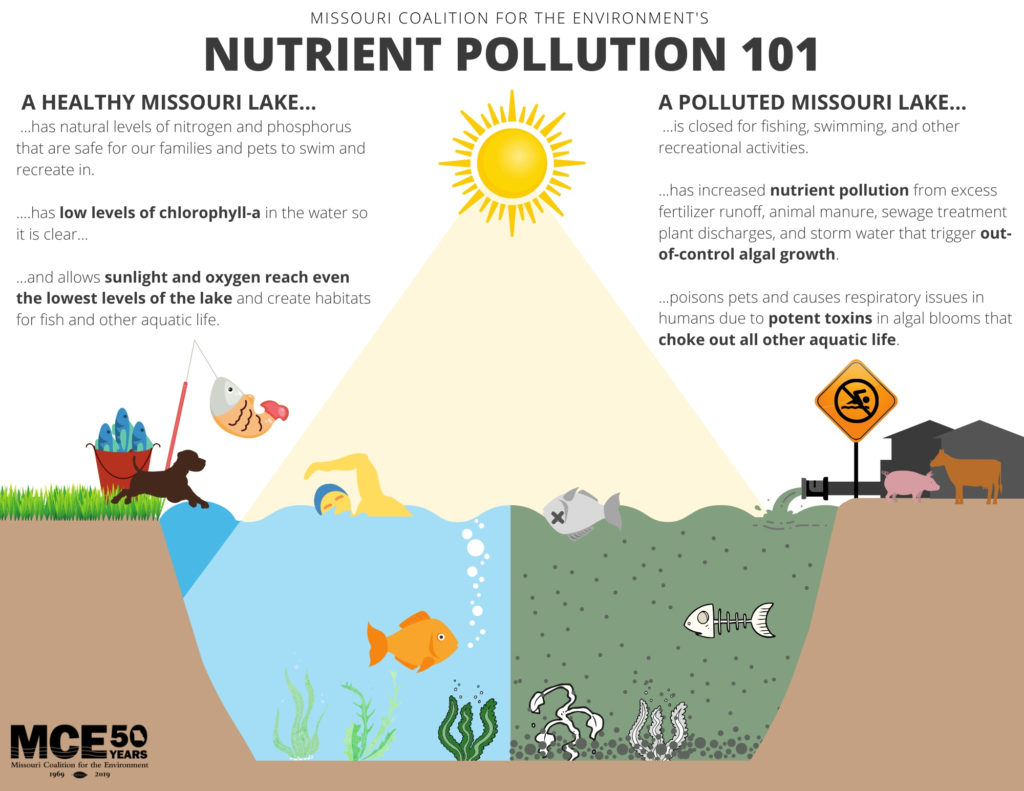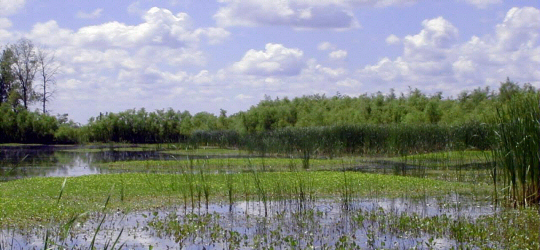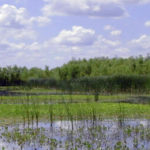Summary
MCE advocates for clean water and the communities that depend on it. Some Native American communities who lived along the Mississippi called it “Great River,” and we believe that our place at the confluence of the mighty Mississippi and Missouri Rivers comes with great responsibility. MCE’s water program protects Missouri’s precious remaining floodplains and wetlands, pushes for water quality standards that protect our health and ecosystems, and stands up against pollutive industries.
We are committed to protecting access to Missouri’s water treasures, such as the Ozark National Scenic Riverways. We support farmers whose practices build healthy soil and keep waterways safe and clean. We rely on your voices — from small river towns to our biggest cities — to make our work possible.
Contact Jim Karpowicz, Community Outreach Specialist
Current Issues
The Clean Water Act (CWA) was created in 1972 with a simple vision: all waters in the United States would be fishable and swimmable by 1983. While we’ve come a long way under the CWA, we still have a long way to go before this vision is realized. In Missouri, many of our waters remain unprotected by even the most basic of CWA’s provisions. For nearly a decade, MCE has been pushing state agencies such as the Department of Natural Resources to bring more waters into the fold and set standards that protect uses like fishing and swimming. MCE is also standing up against big pollutive industries like factory farms, while also advocating for small family farmers whose practices build soil health and keep our rivers and streams clean.
Flooding has left an indelible mark on Missouri’s history and culture. Many of us remember or have heard stories of the devastation wrought by the Flood of 1993. Since 2008, 15 declared natural disasters have been due to flooding — compared to 9 during the previous decade and only 6 during the decade before that. We know that the frequency and severity of flooding disasters is increasing. Extreme weather events, intense management and built infrastructure on our rivers, and increased development have all contributed to making flooding more costly and deadly for Missourians. At MCE, we know that our precious remaining floodplains and wetlands serve as critical buffers to mitigate the impacts of these devastating floods. We oppose developments in floodplains, support green infrastructure, and push agencies like the U.S. Army Corps of Engineers to reconnect and restore our floodplains.
Missouri’s state slogan is “where the rivers run” for good reason. Our state boasts over 180,000 miles of rivers and streams. The Mighty Mississippi River runs from North to South on our Eastern border while the Missouri River runs through the heart of our state. The clear, spring-fed waters of the Ozark National Scenic Riverways (ONSR) in southeastern Missouri are America’s first-ever nationally protected “scenic riverway.” Protecting the health of our rivers and ensuring access to these natural gems are at the core of MCE’s water program. From advocating for a protective Roads and Trails plan for the ONSR’s Roads and Trails to coordinating the Lower Missouri River Coalition to addressing nutrient pollution in the Mississippi River basin, MCE protects rivers and streams so they may continue to run free and healthy for generations to come.
Climate Change
Climate change in Missouri is affecting our natural resources, our health, and our livelihoods. In Missouri, we are experiencing increased flooding, agricultural pests, and more extreme weather events. Not only does burning coal contribute greenhouse gases and particulate matter pollution to the atmosphere, but also it threatens our land and water resources when energy companies dump coal ash debris in our floodplains.
One of the best ways to mitigate the effects of climate change on our water are to protect our natural resources, such as floodplains. Thriving floodplains absorb floodwaters and serve as natural pollution filters. With increased flooding, water quality standards are even more important to ensure that our waters are not contaminated. How we interact with our environment can exacerbate climate change or mitigate its effects.
Learn more about the effects climate change will have on Missouri in the report from the EPA below.
Featured Action

On December 3, 2019, Missouri Coalition for the Environment (MCE) sued the Environmental Protection Agency (EPA) for not protecting Missouri lakes for recreation and drinking water use, and therefore not protecting human health. The EPA approved Governor Parson’s weak “clean water” rule for nutrient pollution following a sharp rebuke of a similar plan just a few years prior. MCE argues that Missouri’s Department of Natural Resources, without justification, removed pollution impacts on human health in violation of the Clean Water Act.
Missouri Governor Mike Parson and state lawmakers have a history of supporting industrial agricultural interests over the protection of Missouri’s water resources and public health. MCE refuses to be a spectator as clean water protections are gutted because we do not want Missouri to end up in a situation like Des Moines (Iowa) or Toledo (Ohio), where literally thousands of lives have been disrupted and millions spent trying to deliver clean drinking water to people due to excessive nutrient pollution.
The need for measurable nutrient pollution standards is more than a decade in the making. What’s new is that Governor Parson and President Trump have decided to support standards that are not protective of human health. Be sure to look at our timeline below to get a sense of how long MCE has engaged on this issue.
Learn more about the lawsuit, nutrient pollution basics, and the timeline of events leading up to filing here.
Resources
Are you a committed to protecting your watershed? Welcome to Watershed 101 where you can learn the basics of watershed function, how you can improve the health of yours, and pledge to be a Watershed Warrior!
Watersheds are extremely important to the environment as well as the surrounding community. They include the water we use for recreation as well as the water we use for everyday life like drinking and bathing. By pledging to become a Watershed Warrior, you are committing to make an effort to be conscious of how your decisions affect your watershed, as well as making an effort to reduce those impacts. Do you want to join our army of warriors fighting for clean, healthy watersheds??
1. Click Start Prezi below to learn ‘What every Watershed Warrior needs to know” starting with what a watershed is, water pollution threats, and what can be done to reduce water pollution in our communities and neighborhoods.
2. Before you take the quiz and pledge, you can find your watershed on our interactive watershed map! Maps of both the St. Louis and Kansas City areas will allow you to find your watershed, as well as where it is in relation to other features such as rivers and parks.
3. Let’s see what you learned! Scroll down to test your watershed knowledge on the short quiz! Select Next after the Hellbender image to begin and progress through the questions. You can do it!!
You’re ready to become a Watershed Warrior! Take the quiz and pledge!
Mining and Safe Water
Mining can have many impacts on water quality and public health, which is why MCE has developed a position on mining in our state.
MCE has also developed the following fact sheets about different types of mining that is common in Missouri.


